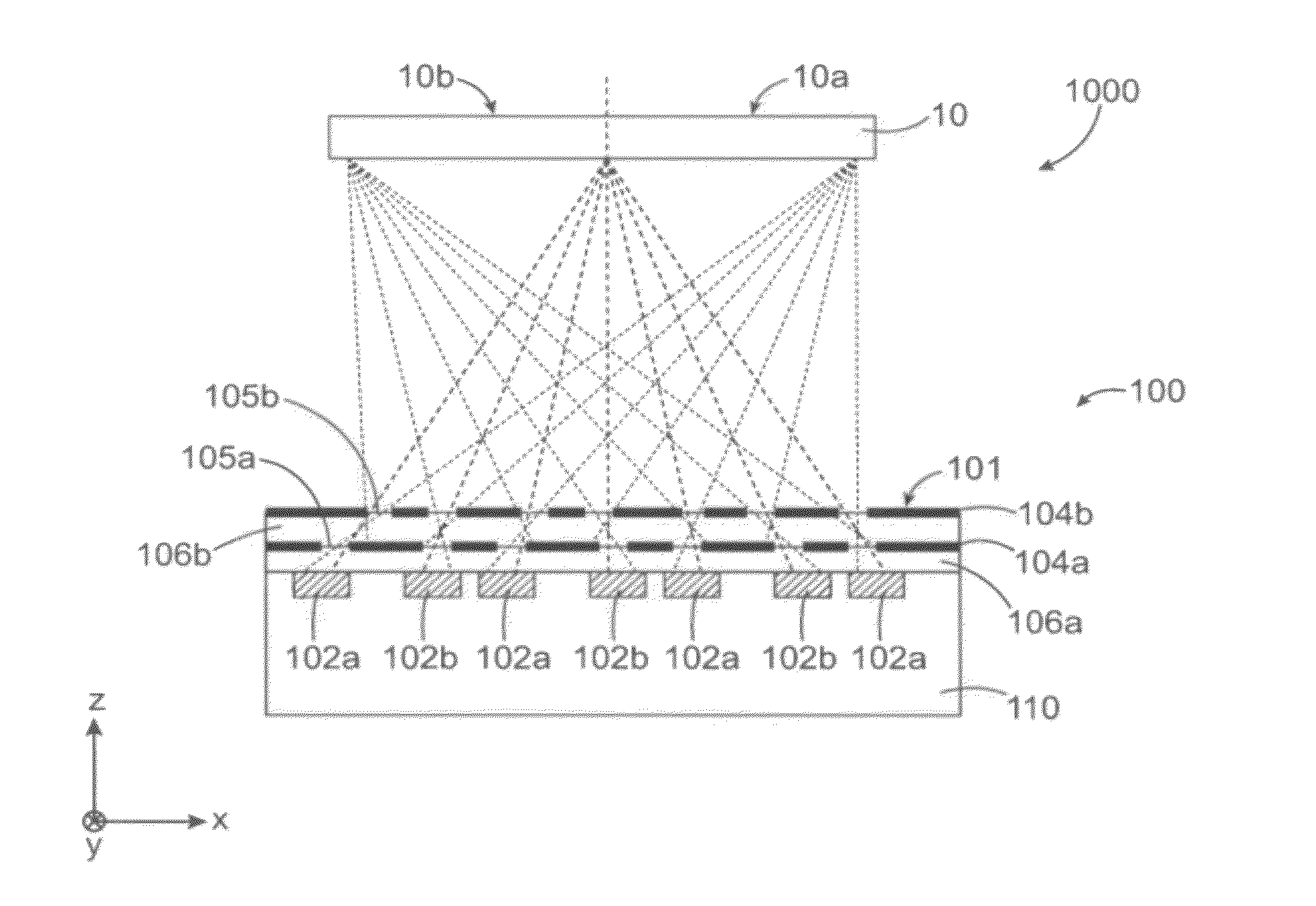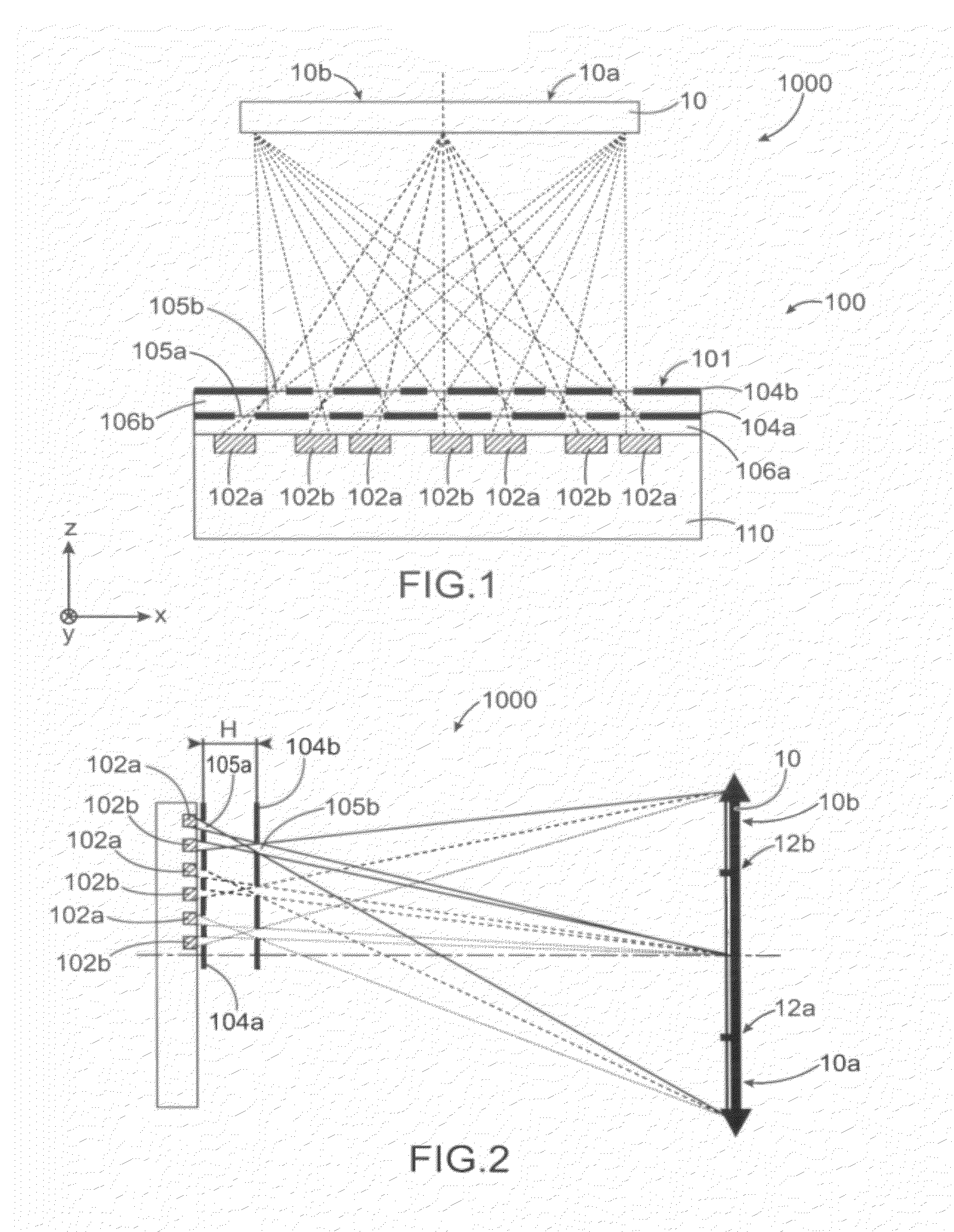Imager integrated circuit and stereoscopic image capture device
a stereoscopic image and integrated circuit technology, applied in the field of fixed or moving stereoscopic image capture, can solve the problems of stereoscopy loss, stereoscopic images generally suffer from these approximations, and the constraints of the optical system are in this case very strong
- Summary
- Abstract
- Description
- Claims
- Application Information
AI Technical Summary
Benefits of technology
Problems solved by technology
Method used
Image
Examples
first embodiment
[0037]In a first embodiment, said means may include at least two opaque layers superimposed above each other, provided between the pixels and the inlet face of the imager integrated circuit, both opaque layers having, passing therethrough, a plurality of holes forming, towards each pixel, at least one pair of superimposed diaphragms capable of passing a part of the light rays corresponding to the image associated with the subset of pixels of which said pixel is part and which are capable of blocking other light rays directed from the optical system to said pixels and corresponding to the other images.
[0038]In a first alternative, the number of holes passing through each of both opaque layers may be equal to the total number of pixels of the N subsets of pixels.
[0039]When N=2 and said portion of the optical system corresponds to half the optical system (that is m=2), a distance H between the pixels and a second one of both opaque layers, a first one of both opaque layers being provid...
second embodiment
[0057]In a second embodiment, said means may include at least two levels of colour filters superimposed above each other, provided between the pixels and the inlet face of the imager integrated circuit, and may form, towards each pixel, at least one first pair of superimposed colour filters configured to pass part of the light rays corresponding to the image associated with the subset of pixels of which said pixel is part and at least one second pair of superimposed colour filters configured to block the other light rays directed from the optical system to said pixel and corresponding to the other images. This embodiment advantageously uses the colour filters present in a colour image sensor to make the means for capturing stereoscopic images, in particular for “back-side” image sensors wherein the light rays do not pass through the metal interconnection lines of the sensor. Once again, no further shuttering element which would reduce the quantity of light captured by the imager int...
PUM
 Login to View More
Login to View More Abstract
Description
Claims
Application Information
 Login to View More
Login to View More - R&D
- Intellectual Property
- Life Sciences
- Materials
- Tech Scout
- Unparalleled Data Quality
- Higher Quality Content
- 60% Fewer Hallucinations
Browse by: Latest US Patents, China's latest patents, Technical Efficacy Thesaurus, Application Domain, Technology Topic, Popular Technical Reports.
© 2025 PatSnap. All rights reserved.Legal|Privacy policy|Modern Slavery Act Transparency Statement|Sitemap|About US| Contact US: help@patsnap.com



